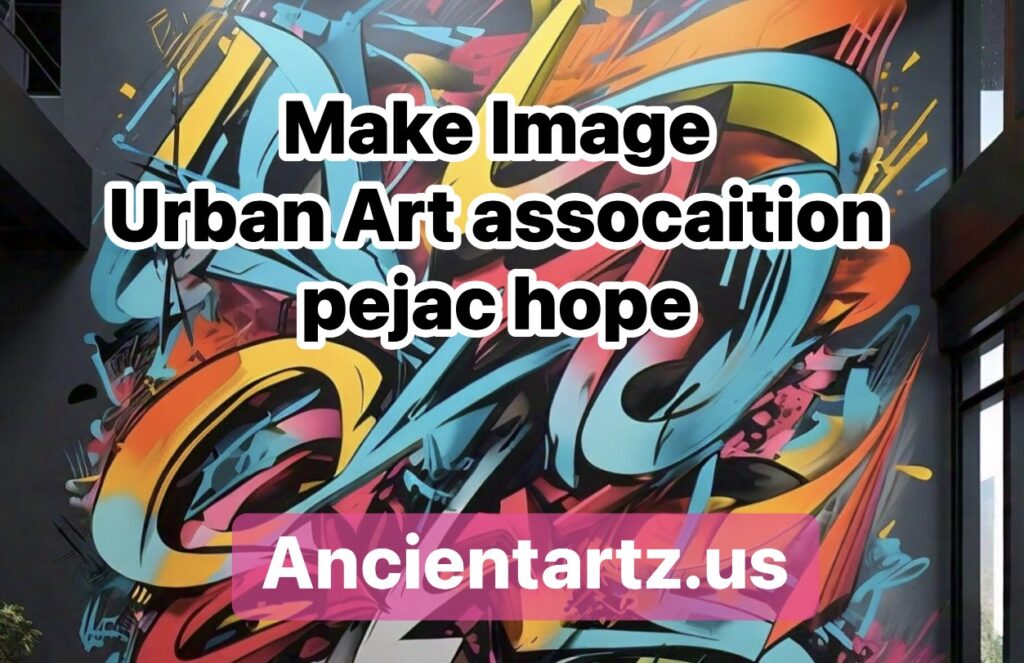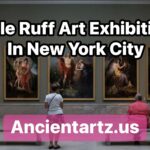Urban art has emerged as a vibrant and dynamic form of expression that captures the essence of contemporary culture. This art form, often found in urban art assocaition pejac hope public spaces, transcends traditional boundaries, allowing artists to engage directly with their communities. One notable figure within this movement is Pejac, a Spanish street artist known for his thought-provoking works. This article explores the significance of urban art, the role of associations like the Urban Art Association, and the unique contributions of Pejac to the urban art landscape.
The Rise of Urban Art
Urban art, often synonymous with street art, has its roots in the subcultures of graffiti and public muralism. Over the past few decades, it has evolved into a recognized and respected art form.
Historical Context: Emerging in the late 20th century, urban art was initially a response to urban decay and social issues. Artists took to the streets to express their frustrations and hopes, using public spaces as their canvas.
Cultural Impact: Today, urban art reflects a broad spectrum of themes, from political commentary to personal expression. It challenges the conventions of the art world by making art accessible to everyone, regardless of socio-economic status.
Pejac, in particular, exemplifies this evolution, pushing the boundaries of urban art through his unique style and powerful messages.
Pejac: The Artist and His Vision
Pejac, born in 1975 in Santander, Spain, has garnered international acclaim for his innovative approach to street art. His work often blends traditional techniques with modern themes, creating pieces that resonate deeply with viewers.
Artistic Style: Pejac’s art is characterized by its intricate detail and clever use of negative space. He employs a variety of techniques, including stencils, painting, and even installation, to create thought-provoking pieces that invite reflection.
Themes and Messages: Central to Pejac’s work are themes of social justice, human rights, and environmental concerns. He often addresses the impact of urbanization and globalization on individuals and communities, prompting viewers to consider their place in the world.
One of Pejac’s most famous series features images of silhouettes interacting with their environments, often highlighting the tension between humanity and nature.
The Role of Urban Art Associations
Urban art associations play a crucial role in promoting, supporting, and legitimizing street art. These organizations often provide resources, platforms, and networking opportunities for artists.
Community Engagement
One of the primary missions of urban art associations is to engage with local communities. They often organize events, workshops, and exhibitions that bring together artists and residents.
Public Art Projects: Many associations facilitate public art projects, where artists collaborate with community members to create murals and installations. These projects foster a sense of ownership and pride within neighborhoods.
Cultural Exchange: Urban art associations often promote cultural exchange by connecting artists from different backgrounds. This encourages diversity in artistic expression and fosters understanding among communities.
Advocacy and Support
In addition to community engagement, urban art associations advocate for the rights of street artists and work to ensure that urban art is recognized as a legitimate form of expression.
Legal Protection: Many urban art associations work to address legal issues surrounding street art, advocating urban art assocaition pejac hope for the protection of artists’ rights and promoting policies that support public art.
Resources and Funding: These organizations often provide resources and funding opportunities for artists, enabling them to pursue their projects and reach wider audiences.
By supporting artists like Pejac, urban art associations help elevate the entire genre, showcasing the power and importance of street art in contemporary culture.
Pejac’s Impact on Urban Art
Pejac’s contributions to the urban art movement extend beyond his individual works. He has played a significant role in shaping the discourse around urban art and its potential to inspire change.
Challenging Perceptions
Through his art, Pejac challenges traditional perceptions of street art, elevating it from mere vandalism to a respected and impactful form of expression.
Art in Context: By placing his works in specific urban contexts, Pejac invites viewers to consider the relationship between art and its environment. His pieces often comment on social issues relevant to the locations where they are displayed.
Global Reach: Pejac has taken his art to various cities worldwide, from New York to Berlin. This global reach amplifies his messages and demonstrates the universality of the themes he explores.
Inspiring New Generations
Pejac’s innovative approach has inspired a new generation of urban artists, encouraging them to think critically about their work and its impact.
Mentorship: Pejac actively engages with young artists, providing mentorship and guidance. He often shares his experiences and techniques, fostering a collaborative spirit within the urban art community.
Workshops and Collaborations: By participating in workshops and collaborative projects, Pejac helps cultivate creativity and experimentation among emerging artists. This nurturing environment encourages the development of new ideas and styles.
The Intersection of Technology and Urban Art
As technology continues to advance, its influence on urban art becomes increasingly pronounced. Artists like Pejac are at the forefront of this intersection, utilizing digital tools to enhance their creative expression.
Digital Artistry
Many contemporary urban artists incorporate digital techniques into their work, blurring the lines between traditional and digital art forms.
Augmented Reality: Pejac has explored the use of augmented reality (AR) to create interactive experiences. By combining physical artworks with digital elements, he engages viewers in new and exciting ways.
Social Media: The rise of social media has transformed the way urban artists share their work. Pejac, like many artists, uses platforms like Instagram to showcase his pieces, connect with fans, and build a global audience.
New Platforms for Expression
The digital realm has also opened up new platforms for urban art, allowing artists to experiment with their craft in innovative ways.
Virtual Exhibitions: Urban art associations are increasingly hosting virtual exhibitions, enabling artists to reach wider audiences and showcase their work in unique digital spaces.
Collaborative Projects: Online platforms facilitate collaboration among artists, allowing them to work together on projects that transcend geographical boundaries. This fosters a sense of community and collective creativity.
The Future of Urban Art
As urban art continues to evolve, several trends are likely to shape its future. Artists like Pejac will play a pivotal role in navigating these changes.
Sustainability and Environmental Awareness
In an era marked by climate change and environmental concerns, urban art is increasingly addressing these issues.
Eco-Conscious Art: Many artists are incorporating sustainable practices into their work, using eco-friendly materials and themes that promote environmental awareness.
Community Activism: Urban art can serve as a powerful tool for activism, raising awareness about social and environmental issues. Artists like Pejac often use their platforms to advocate for change, encouraging communities to take action.
Continued Cultural Relevance
As society evolves, so too will the themes explored in urban art. The genre will remain a reflection of contemporary issues and a means of expressing collective hopes and fears.
Social Justice: Urban artists will likely continue to address social justice issues, using their art to comment on inequality, discrimination, and human rights.
Cultural Identity: The exploration of cultural identity will also play a significant role in the future of urban art. Artists from diverse backgrounds will bring their unique perspectives to the forefront, enriching the artistic landscape.
Collaboration and Innovation
The spirit of collaboration will continue to be a driving force in urban art, fostering innovation and creativity.
Cross-Disciplinary Projects: As artists collaborate with musicians, writers, and performers, urban art will become even more dynamic and multifaceted.
Experimentation with Mediums: The integration of new technologies and mediums will encourage artists to experiment and push boundaries, resulting in fresh and exciting works.
Conclusion
Urban art, exemplified by the works of artists like Pejac, has become a vital and influential part of contemporary culture. Urban art assocaition pejac hope Through its ability to engage with communities, challenge perceptions, and address pressing social issues, urban art has transcended its origins to become a respected and powerful form of expression.
The role of urban art associations in supporting artists and promoting public art cannot be overstated. By fostering collaboration, advocacy, and community engagement, these organizations contribute to the richness and diversity of the urban art landscape.


